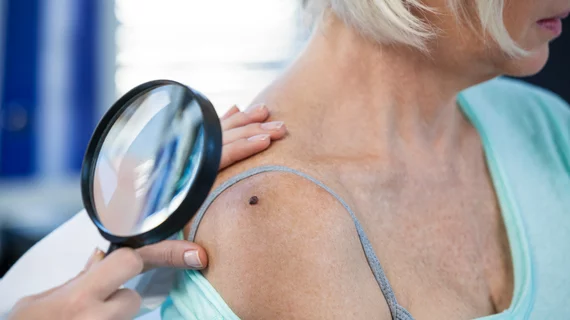The American Society for Radiation Oncology (ASTRO) released new clinical guidelines this week, hoping to address wide treatment variation in skin cancer care across the country.
A task force developed the recommendations using feedback from several experts and best practices gathered from more than 100 studies. They spell out when it’s wise to use radiation therapy for patients diagnosed with the two most common forms of skin cancer—basal and cutaneous squamous cell carcinomas (BCC, cSCC).
ASTRO wanted to provide more clarity on how to treat these most common forms, including recommended dosage amounts, according to the guidelines, published Monday, Dec. 9, in Practical Radiation Oncology.
"There is significant variation in practice about when and how radiation should be used for non-melanoma skin cancers, largely because few randomized studies have compared modern treatment options head-to-head," Phillip Devlin, MD, chair of the task force and a radiation oncologist at Brigham and Women’s Hospital, said in a statement.
Skin is currently the most prevalent cancer in the U.S., affecting more than 5 million individuals a year. About 95% of those cases are BCC or cSCC, which typically respond well to radiation when they’re caught early enough. Surgery to remove the lesion is often the first line of defense, but post-op radiation treatment can also prove crucial, the task force noted.
ASTRO spells out three skin cancer scenarios that are appropriate for such therapy:
(1) Definitive/curative: Radiation is strongly recommended for those who cannot or will not undergo surgical resection. It’s conditionally recommended for patients with skin cancer in anatomically sensitive areas, and discouraged for others who have genetic conditions that might make them more sensitive to treatment.
(2) Adjuvant/post-operative: Radiation after surgery is urged for patients who are at a high risk for cancer recurrence, especially when the cancer has spread to the nerves. ASTRO also spells out possible clues that might indicate an individual is at greater risk for recurrence.
(3) Spread to regional lymph nodes: Surgical removal of the nodes followed with radiation treatment is strongly recommended for both cancer types in most cases, with a few caveats.
The guidelines also explore suggested dosing and the different types of radiation delivery methods, with the task force concluding that using any of the major modalities results in similar outcomes.
You can read the full-text version of the guidelines here, or a shorter executive summary here.

